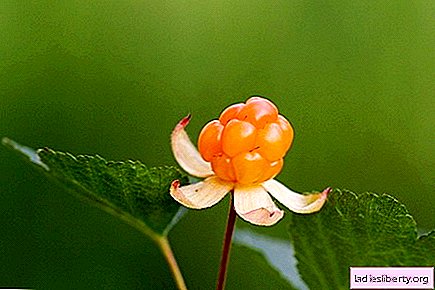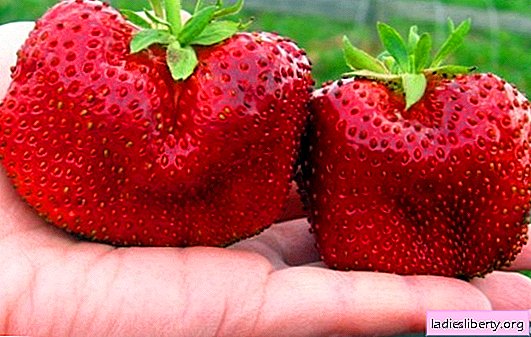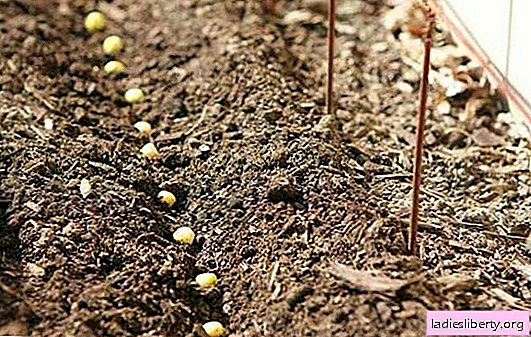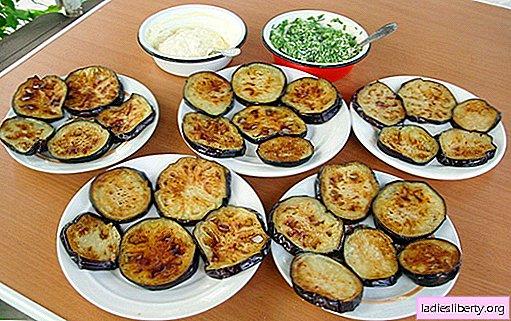
Cloudberries - general description
With long and painstaking work, having spent a fair amount of time in the swamp, you can collect truly precious berries, called cloudberries. A rare plant can be compared with it in the number of nutrients. Cloudberry (lat. Rubus chamaemorus) belongs to the genus Rubus (Raspberry) of the Pink family and is a perennial herb with a long branched rhizome and several stems reaching 25-30 cm in height.
Flowers appearing in May-June are small in size and bright white in color. Cloudberry berry is a complex drupe resembling raspberries. It ripens very unusually - at first it turns red, and only then it is orange-yellow and translucent. Cloudberries are harvested in July-August, and the roots are harvested in late October. Popularly, it has names: Arctic raspberries, gloss and tsar berry.
Cloudberries - types and places of growth
Cloudberry is a berry of the northern regions. In Russia, it grows in the Far East, in Siberia and in the Arctic regions of the European part. Basically, it can be found in swamps, peatlands, in shrub and moss tundra.
Cloudberry - healing properties
The healing properties of cloudberries are in direct connection with its extremely rich chemical composition. Its berries contain a large amount of ascorbic acid (vitamin C), carotene (provitamin A), vitamin E, as well as citric and malic acids. In addition, cloudberries include sugars, pectin and tannins, many minerals (calcium, magnesium, aluminum, silicon, chromium, copper, sodium, etc.), volatile and natural dyes.
Cloudberry is widely used for the manufacture of medicines in traditional medicine. It has a diuretic effect and is used for diseases of the urinary tract and kidneys. Cloudberry leaf infusion is used as an anti-inflammatory, hemostatic and wound healing agent. The use of cloudberries contributes to blood formation and strengthening immunity.
Some experts note the ability of cloudberry preparations to inhibit the development of atherosclerotic manifestations, they help with hypertension and act as an astringent for gastrointestinal disorders. Residents of the northern regions with the help of cloudberries overcome the disease of scurvy and use its diaphoretic property for influenza and the common cold.
Cloudberries - dosage forms
For the manufacture of medicines using berries, leaves and roots of cloudberries. In the cosmetology industry, oil from its seeds is used, which, as part of creams and masks, acts as an effective antioxidant, preventing the formation of wrinkles and age spots. Cloudberry berries can be consumed fresh, and squeezed juice from them, which is perfect for combating vitamin deficiency and scurvy.
Fresh cloudberries can be stored for a long time (up to 3-3.5 months). For longer storage, it is soaked. Soaked cloudberries retain almost all the beneficial properties of fresh berries. A decoction of the roots and leaves of this plant is a good diuretic, and the infusion is used for bleeding and metabolic disorders.
Cloudberries - recipes
A decoction of the leaves and roots of cloudberries is prepared from 1 tbsp. tablespoons of dry crushed raw materials, which is filled with 200 ml of boiling water and boiled for 10-15 minutes on low heat. Then 40 minutes insist, filter and dilute with water to the original volume. Reception - 50-70 ml 4 times a day 25-30 minutes before meals. This tool is used for cystitis, edema, diarrhea, gout, metabolic disorders.
The infusion of cloudberry leaves is prepared from 1 tbsp. tablespoons of dried finely chopped raw materials, filled with 200 ml of boiling water and infused for 4 hours. Reception - 50-70 ml 4 times a day.
With reduced acidity of the stomach and with gastrointestinal tract disorders, it is recommended to take 2 tablespoons of the juice of fresh cloudberry berries diluted in 50 ml of water with food.
Cloudberry - contraindications
There are no specific contraindications to the use of cloudberry-based preparations. Their use is not recommended for individual intolerance to any components in the composition of berries. At the slightest doubt, you should consult your doctor.
Comments











